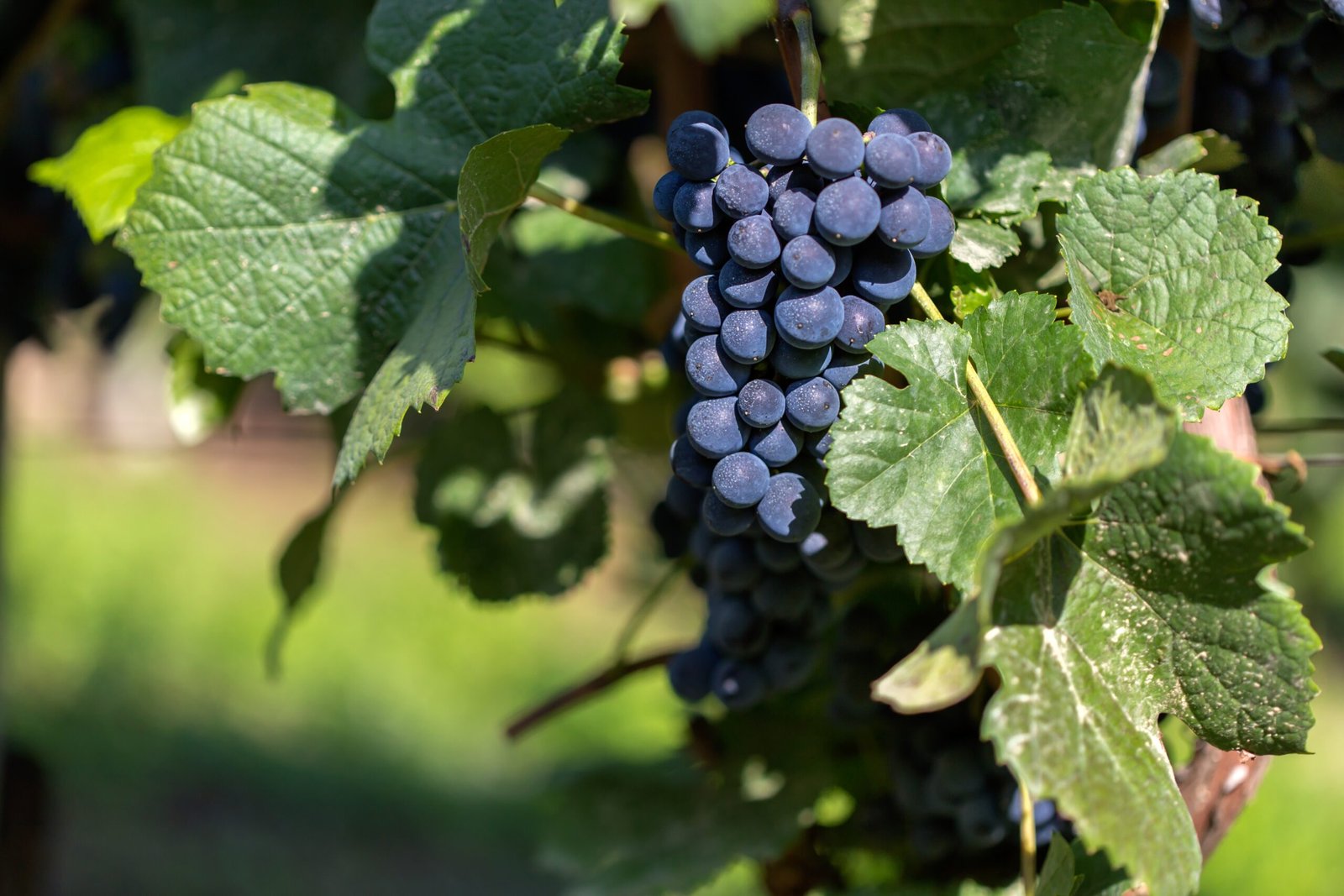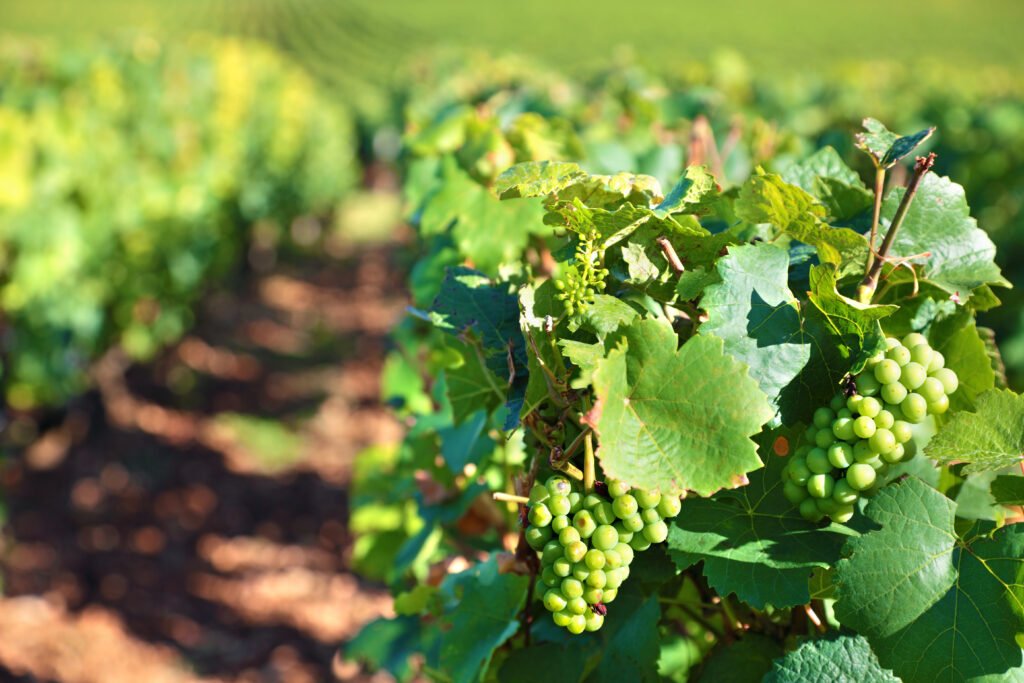Latest News
Black Grapes Farming in India | A Lucrative Venture for Fruit Growers

Black grapes farming is gaining popularity in India due to its high market demand, nutritional value, and export potential. With states like Maharashtra, Karnataka, and Tamil Nadu leading production, black grapes offer excellent returns for farmers adopting scientific practices. This guide explains ideal climate, soil, popular varieties, vineyard management, pest control, and harvesting techniques. Learn how to grow black grapes successfully and tap into domestic and export markets with smart cultivation methods and government-supported schemes.
Why Black Grapes Are a Profitable Crop
Black grapes are rich in antioxidants, resveratrol, vitamins C and K, making them highly valued in both fresh and processed forms. The rising demand for table grapes, raisins, juices, and wines makes black grapes one of India’s most profitable fruit crops.

Benefits for Farmers:
-
High yield per acre
-
Suitable for tropical and subtropical climates
-
Long shelf life
-
Good export price
-
Processable into multiple value-added products
Ideal Conditions for Black Grapes Farming
✅ Climate
-
Warm, dry climate preferred
-
Temperature: 25°C–35°C
-
Dry weather during ripening improves sweetness and quality
-
Rain during harvest can damage fruits—so plan carefully
✅ Soil
-
Well-drained sandy loam or clayey loam
-
Soil pH: 6.5–7.5
-
Avoid saline or waterlogged soils
-
Deep ploughing and leveling required before plantation
Top Black Grape Varieties Grown in India
| Variety | Features | Regions |
|---|---|---|
| Sharad Seedless | Sweet, large berries, export grade | Maharashtra, Karnataka |
| Fantasy Seedless | High yield, deep color | Andhra Pradesh, Tamil Nadu |
| Black Corinth | Small seedless berries, used for raisins | Export zones |
| Bangalore Blue | Strong aroma, ideal for juice and wine | Karnataka |
| Krishna | Early ripening, round berries | North India, Gujarat |

Red grape farm . Small family business. Happy smiling cheerful vineyard female wearing overalls and a farm dress straw hat, selecting out the get size grapes ready for sale or for making wine.
Propagation and Planting Method
📅 Best Planting Time
-
January to March or June–July (monsoon-supported planting)
🌱 Propagation
-
Propagated through hardwood cuttings or grafted vines
-
Ensure certified disease-free planting material
📏 Spacing
-
Row-to-row: 3 m
-
Vine-to-vine: 1.8–2 m
-
Use trellis or bower system for proper vine support
Irrigation and Nutrition Management
💧 Irrigation
-
Drip irrigation highly recommended
-
Frequent watering during berry development
-
Withhold irrigation before harvest to increase sweetness
🌿 Nutrient Management
-
Apply 10–15 tons of FYM/acre
-
NPK dose: 100:50:100 kg/acre (split application)
-
Foliar sprays of zinc, boron, magnesium enhance fruit quality
-
Use bio-fertilizers and neem cake for organic farming
Training and Pruning of Grapevines
Training systems improve vine structure, yield, and disease control.
Popular Systems:
-
Bower system (Arbour) – widely used in Maharashtra
-
Y-trellis – suitable for high-density planting
-
Kniffin or Telephone system – used in Tamil Nadu & Karnataka
Pruning:
-
Prune twice annually – one for vegetative growth, one for fruiting
-
Remove weak, dead, and overlapping shoots
Pest and Disease Management
🐛 Common Pests:
-
Mealybugs, thrips, fruit borers, leaf hoppers
-
Control: Use neem oil, sticky traps, and biological controls
🍂 Common Diseases:
-
Downy mildew, powdery mildew, anthracnose
-
Control: Sulphur and copper-based organic sprays, good air circulation
🌿 Organic Protection:
-
Use Trichoderma, Bacillus subtilis
-
Regular pruning and hygiene reduce infestation risk
Harvesting and Yield
-
Black grapes mature 4–5 months after pruning
-
Harvest when berries are fully colored, sweet, and firm
-
Use clean shears to avoid fruit injury
🍇 Average Yield:
-
8–12 tonnes/acre under traditional systems
-
15–18 tonnes/acre under scientific/high-density farming
Post-Harvest Handling and Marketing
-
Grading by berry size and color
-
Pack in ventilated crates with padding
-
Store at 0°C to 2°C with 90–95% humidity
-
Shelf life: 2–3 weeks under cold storage
Value-Added Products:
-
Raisins
-
Grape juice
-
Wine and vinegar
-
Jam and jelly
Export and Market Potential
-
India exports black grapes to UAE, UK, Netherlands, Russia, and Bangladesh
-
Export demand peaks during February to April
-
APEDA and state boards support quality certification and cold chain logistics
Government Support for Grape Farmers
-
MIDH (Mission for Integrated Development of Horticulture) – supports planting, trellis setup, and storage
-
NHB (National Horticulture Board) – provides post-harvest subsidy
-
APEDA – helps with export compliance and certification
-
FPOs and agri startups offer market linkages and training

Chardonnay grapes for white wine growing in a vineyard in the Burgundy region of France
Conclusion | Black Grapes Farming is a High-Income, Scalable Agribusiness
Black grapes offer farmers a sustainable and high-return crop when managed scientifically. With multiple harvests, a long shelf life, and growing demand in domestic and export markets, black grapes can transform rural incomes and support agri-entrepreneurship. By adopting modern techniques, certified planting materials, and proper market strategies, Indian farmers can turn black grapes into a long-term success story.
FAQs
Q1: Which is the best black grape variety for Indian conditions?
Sharad Seedless and Bangalore Blue are highly popular for fresh markets and processing.
Q2: How many times can grapes be harvested in a year?
Grapes are typically harvested once annually, though pruning may allow for two flushes in tropical areas.
Q3: How long does it take for black grape vines to bear fruit?
Well-managed vines start producing commercially in 2.5 to 3 years.
Q4: Is black grape farming suitable for organic methods?
Yes. Many farmers are adopting organic grape farming using neem-based inputs and bio-control agents.
Q5: What is the average profit from black grape farming?
Net profits can range from ₹1.5 to ₹3 lakhs per acre, depending on variety, market access, and input costs.













